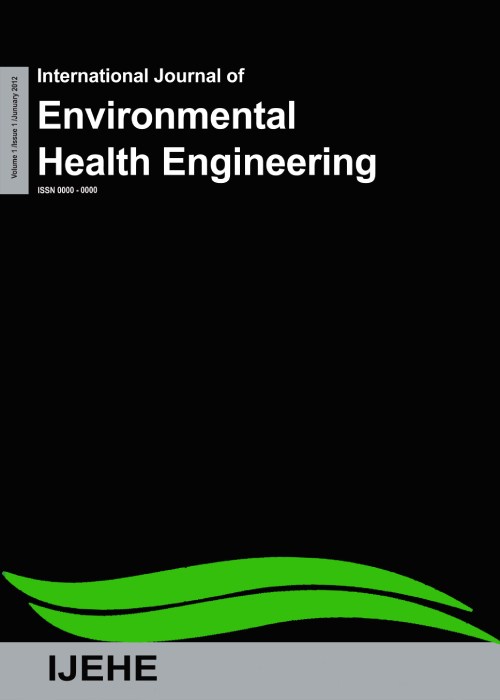فهرست مطالب
International Journal of Environmental Health Engineering
Volume:1 Issue: 6, Jul 2012
- تاریخ انتشار: 1390/11/18
- تعداد عناوین: 2
-
-
Page 1Aims
The purpose of this study is to investigate the feasibility of the absorption of lead and cadmium from the leachate, by natural zeolite clinoptilolite and improving the zeolite ability by a modified surface.
Materials and MethodsTo examine the absorption ability of these two metals (lead and cadmium), the variables, such as, type of sorbent, sorbent concentration, and contact time were studied. Zeolite samples were analyzed by X-ray florescence, the spectrum of X-ray diffraction, and Brunauer-Emmett-Teller (BET).
ResultsThe absorption efficiency of the modified zeolites were increased from 4.2 and 5.3 percent to 71.6 and 75.2 percent for lead and cadmium, respectively. With increasing the surfactant concentration from 2 to 20 mmol/L, the absorption efficiency of modified zeolite for lead and cadmium was increased to 71 and 74%, respectively. The best isotherm model for lead adsorption was Freundlich model, with a determination coefficient equal to 0.99, and for cadmium it was Langmuir model with a determination coefficient equal to 0.99.
ConclusionsThe modified zeolite with surfactant can be used as an appropriate adsorbent for the separation of heavy metals from waste Leachate. Lead and cadmium were absorbed in a single layer on the surface of the modified zeolite with surfactant, comparing different isoterm models, indicated that the capacity of the modified zeolite for lead adsorption was more than cadmium adsorption, but cadmium was absorbed with higher energy.
Keywords: Adsorption, heavy metals, modified clinoptilolite, unmodified clinoptilolite -
Page 2Aims
In this study, the adsorption process using nickel oxide nanoparticles was studied in a laboratory scale for wastewater treatment containing mono azo Orange II dye.
Materials and MethodsThe effect of various parameters such as initial dye concentration, pH, contact time and different concentrations of nickel oxide was investigated. The adsorption experiments were done with different concentrations of dye in a solution using a specific amount of nickel oxide nanoparticle with different pH values and a agitator speed of 100 revolutions per minute (rpm) for about 2 hours. Samples were centrifuged and the concentration of each dye was determined by ultraviolet (UV)-Vis spectrophotometer (DR 5000).
ResultsBased on obtained results, the optimum pH range to dye removal is acidic pH, and under lab conditions, 0.6 g/L of nickel oxide can completely remove the 50 mg/L of dye. Although increasing the dye concentration resulted in decreased process efficiency, up to 100 mg/L of dye concentration, considerable efficiency was obtained.
ConclusionsThe data showed that the nickel oxide nanoparticles could be used as an efficient adsorbent for decolorization of azo dyes.
Keywords: Adsorption, azo dye, Decolorization, nickel oxide nanoparticles


